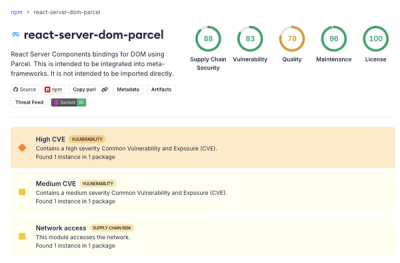Dynamite 
Dynamite is a promise-based DynamoDB client. It was created to address performance issues in our previous DynamoDB client. Dynamite will almost always comply with the latest DynamoDB spec on Amazon.
Installation
$ npm install dynamite
Running Tests
Ensure that all of the required node modules are installed in the Dynamite directory by first running:
$ npm install
The tests will be run against a LocalDynamo service. Currently, there is no way to change the port without modifying the connection code in test/utils/TestUtils.js. To run the tests:
$ npm test
Creating a Client
var Dynamite = require('dynamite')
var options = {
region: 'us-east-1',
accessKeyId: 'xxx',
secretAccessKey: 'xxx'
}
var client = new Dynamite.Client(options)
Options requires all of:
- region
- accessKeyId
- secretAccessKey
If a region key is not provided in the options hash but a endpoint key is present, Dynamite will try to infer the region from the host key.
Options can also optionally take a hash with a key dbClient which points to an object that implements the AWS SDK interface for node.js.
Optional Options Keys
sslEnabled: a boolean to turn ssl on or off for the connection.endPoint: the address of the DynamoDB instance to try to communicate with.retryHandler: a function(method, table, response) that will be triggered if Dynamite needs to retry a command.
Foreword: Kew and You
All functions return Kew promises on execute(). These functions will all then take the form:
client.fn(params)
.execute()
.then(function(){
})
.fail(function(e) {
})
.fin(function() {
})
Therefore, these docs will focus more on function signatures and assume that the developer using those functions will comply with the Kew API in turn.
Tables
Creating a Table
Table creation is part of the database's concerns and thus doesn't have its own pretty API built into Dynamite. A snippet successfully creating a table that is compliant with the 2012 DynamoDB spec can be found in test/utils/TestUtils.js.
Describing a Table
Tables can have descriptions. Retrieve them with:
client.describeTable('table-name')
Conditions
Conditions ensure that certain properties of the item are either absent or equal to a certain value before allowing whatever operation to which they were supplied to mutate the item. They become very useful when items should only be updated if they are missing a field or are of the wrong value. There currently exist two kinds of conditions: expectAttributeEquals and expectAttributeAbsent. Every operation has particular behaviors when conditions are or are not met.
Adding conditions to an operation is fairly trivial:
var conditions = client.newConditionBuilder()
.expectAttributeEquals('age', 29)
client.fn('some-table')
.withCondition(conditions)
.execute()
.then(function () {
})
There is also a helper method for building conditions from a JSON object.
var conditions = client.conditions({age: 29})
client.fn('some-table')
.withCondition(conditions)
.execute()
If a condition fails, the promise will be rejected with a conditional error,
which you can detect with the isConditionalError method
client.fn('some-table')
.withCondition(client.conditions({age: 29})
.execute()
.fail(function (e) {
if (!client.isConditionalError(e)) {
throw new Error('Unexpected age; conditional check failed')
} else {
throw e
}
})
Catching all conditional errors is a common idiom, so there is a
throwUnlessConditionalError helper method for this case.
client.fn('some-table')
.withCondition(client.conditions({age: 29})
.execute()
.fail(client.throwUnlessConditionalError)
Getting an Item From a Table
client.getItem('user-table')
.setHashKey('userId', 'userA')
.setRangeKey('column', '@')
.execute()
.then(function(data) {
})
If an item does not exist, data.result will be undefined.
Getting Select Attributes
client.getItem('user-table')
.setHashKey('userId', 'userA')
.setRangeKey('column', '@')
.selectAttributes(['userId', 'column'])
.execute()
.then(function(data) {
})
Batch Get
The batch get API allows you to request multiple items with specific primary keys, from different
tables, in a single fetch.
client.newBatchGetBuilder()
.requestItems('user', [{'userId': 'userA', 'column': '@'}, {'userId': 'userB', 'column': '@'}])
.requestItems('phones', [{'userId': 'userA', 'column': 'phone1'}, {'userId': 'userB', 'column': 'phone1'}])
.execute()
requestItems can be called multiple times, with a table name and an array of objects representing
primary keys, in the form {hashKey: 123, rangeKey: 456}.
Putting an Item Into a Table
Items are handled as JavaScript Objects by the client. These are then converted into an AWS specific format and sent off. The only accepted types of data that can be stored in DynamoDB are Strings, Numbers, and Sets (Arrays). Sets can contain either only Numbers or Strings.
client.putItem('user-table', {
userId: 'userA',
column: '@',
age: 30,
company: 'Medium',
nickNames: ['Ev', 'Evan'],
postIds: [1, 2, 3]
})
Overrides
If an item with the same hash and range keys as the one that is being inserted, the old item will be replaced with the item that is being put in its place.
client.putItem('user-table', {
userId: 'userA',
column: '@',
height: 72
})
If the item above were to be retrieved from the table user-table, then age would be undefined and a new key height would be available.
Conditional Writes
expectAttributeEquals
The item will only be replaced if the field field in the item is equal to the param value. If the item does not exist in the table, or the condition is not met, the request will fail.
expectAttributeAbsent
The item will only be replaced if the field field is not set in the item in the table. If the item does not exist in the table, then the item will be written to the table. If the field field exists for the item in the table, the request will fail.
Deleting Items From a Table
If the hash key and range key match an item, it will be deleted. Upon success, the function returns the previous attributes and values of the deleted item.
client.deleteItem('user-table')
.setHashKey('userId', 'userA')
.setRangeKey('column', '@')
.execute()
.then(function (data) {
})
Conditional Deletes
expectAttributeEquals
If an item does not exist, then the request will fail. Otherwise, if the condition is met, the item will be deleted.
expectAttributeAbsent
If an item does not exist, then the request will fail. Otherwise, if the condition is met, the item will be deleted.
Updating an Item
There are three methods available to modify columns for items: putAttribute(field, value), deleteAttribute(field), and addToAttribute(field, value).
If an item does not exist, the update query will create the item and update its attributes accordingly.
If a value is updated on an attribute that does not exist, the attribute will be added to the item and set to the value passed to putsAttribute(field, value). If an attribute does not exist and it's value is incremented, that attribute will be added to the item and it's value will be set to the value passed to addToAttribute(field, value). If an attribute is deleted and it does not exist, the operation becomes a nonsense operation and has no effect on the item.
Putting empty attributes causes the whole update query to fail.
client.newUpdateBuilder('user-table')
.setHashKey('userId', 'userA')
.setRangeKey('column', '@')
.enableUpsert()
.putAttribute('age', 30)
.addToAttribute('age', 1)
.deleteAttribute('weight')
.putAttribute('height', 72)
.execute()
.then(function (data) {
})
Conditional Updates
Conditions should be added with withCondition before any update commands.
expectAttributeEquals
If the item does not exist, the update query will fail.
expectAttributeAbsent
If the item does not exist, the update query will create the item and update its attributes accordingly.
Querying a Table
Amazon features extensive documentation describing querying and scanning in great detail.
A Query operation searches only primary key attribute values and supports a subset of comparison operators on key attribute values to refine the search process. A query returns all of the item data for the matching primary keys (all of each item's attributes) up to 1 MB of data per query operation. A Query operation always returns results, but can return empty results.
A Query operation seeks the specified composite primary key, or range of keys, until one of the following events occur:
- The result set is exhausted.
- The number of items retrieved reaches the value of the Limit parameter, if specified.
- The amount of data retrieved reaches the maximum result set size limit of 1 MB.
Usage
Our initial data set:
[
{"postId": "post1", "column": "@", "title": "This is my post", "content": "And here is some content!", "tags": ['foo', 'bar']},
{"postId": "post1", "column": "/comment/timestamp/002123", "comment": "this is slightly later"},
{"postId": "post1", "column": "/comment/timestamp/010000", "comment": "where am I?"},
{"postId": "post1", "column": "/comment/timestamp/001111", "comment": "HEYYOOOOO"},
{"postId": "post1", "column": "/comment/timestamp/001112", "comment": "what's up?"},
{"postId": "post1", "column": "/canEdit/user/AAA", "userId": "AAA"}
]
Querying all items whose postId is post1:
client.newQueryBuilder('comments-table')
.setHashKey('postId', 'post1')
.execute()
.then(function (data) {
})
The result of the query will be a DynamoResult object with a result property for the result set.
DynamoResult also has two methods:
Returns whether there are remaining results for this query.
- next(): Promise.<DynamoResult>
Executes a new query that fetches the next page of results.
There are also a variety of methods that refine and restrict the returned set of results that operate on the indexed range key, which in our sample case is column.
getCount()
Get the count of the number of items, not the actual items themselves.
client.newQueryBuilder('comments-table')
.setHashKey('postId', 'post1')
.getCount()
scanForward()
Demand that items be returned in ascending ASCII or numerical value. This is the default.
scanBackward()
Demand that items be returned in descending ASCII or numerical value.
setStartKey(key)
Start the query at a specified hash key. Useful when your request is returned in chunks and subsequent chunks need to be retrieved after the current batch is processed.
When partial results are returned, the LastEvaluatedKey can be passed in as an argument to setStartKey() on the next query to get the next section of results.
In general, calling setStartKey directly is discouraged in favor of using the next() method described above.
setLimit(max)
Return at most max items. Note that if the response will be larger than 1mb, then at most 1mb of data is returned, and the next batch of items needs to be queried while specifying that the query start at the LastEvaluatedKey. That key is returned with the results of the current query.
indexBeginsWith(range_key, key_part)
Return only items where the range key begins with key_part. For instance, retrieve all comments for posts with a, in our case unique, hash key of post1.
client.newQueryBuilder('comments-table')
.setHashKey('postId', 'post1')
.indexBeginsWith('column', '/comment/')
indexBetween(range_key, key_part_start, key_part_end)
Return only items whose range key is "between" the start and end keys. The range key will be compared to the start and end keys in a lexicographic manner. So 'b' is "between" 'a' and 'c'.
Retrieve all comments for posts with the hash key post1 up until the 009999 timestamp:
client.newQueryBuilder('comments-table')
.setHashKey('postId', 'post1')
.indexBetween('column', '/comment/', '/comment/timestamp/009999')
indexLessThan(range_key, value)
indexLessThanEqual(range_key, value)
indexGreaterThan(range_key, value)
indexGreaterThanEqual(range_key, value)
indexEqual(range_key, value)
Return all items whose range keys comply with the afore-listed operations.
selectAttributes(attributes[])
Returned items will be stripped of all attributes except their hash key, range key, and the provided array of strings attributes.
Scanning A Table
Amazon features extensive documentation describing querying and scanning in great detail.
A Scan operation examines every item in the table. You can specify filters to apply to the results to refine the values returned to you, after the scan has finished. Amazon DynamoDB puts a 1 MB limit on the scan (the limit applies before the results are filtered). A Scan can result in no table data meeting the filter criteria.
Scan supports a specific set of comparison operators. For information about each comparison operator available for scan operations, go to the API entry for Scan in the Amazon DynamoDB API Reference.
Usage
Our initial data set:
[
{"userId": "c", "column": "@", "post": "3", "email": "1@medium.com"},
{"userId": "b", "column": "@", "post": "0", "address": "800 Market St. SF, CA"},
{"userId": "a", "column": "@", "post": "5", "email": "3@medium"},
{"userId": "d", "column": "@", "post": "2", "twitter": "haha"},
{"userId": "e", "column": "@", "post": "2", "twitter": "hoho"},
{"userId": "f", "column": "@", "post": "4", "description": "Designer", "email": "h@w.com"},
{"userId": "h", "column": "@", "post": "6", "tags": ['foo', 'bar']}
]
A simple scan looks like this:
client.newScanBuilder('user-table')
.execute()
.then(function (data) {
})
If your dataset contains more than 1 MB of data, the data that is returned will contain a LastEvaluatedKey key that will tell you what the last evaluated key for the scan was, so you can start the next scan there by passing the LastEvaluatedKey to setStartKey(key).
.filterAttributeEquals(field, value)
Include items whose field equals value.
client.newScanBuilder('user-table')
.filterAttributeEquals('twitter', 'haha')
.execute()
.then(function (data) {
})
The other filterAttribute* functions are used in the exact same way.
.filterAttributeNotEquals(field, value)
Include items whose field does not equal value.
.filterAttributeLessThanEqual(field, value)
Include items whose field is less than or equal to value.
.filterAttributeLessThan(field, value)
Include items whose field is less than value.
.filterAttributeGreaterThanEqual(field, value)
Include items whose field is greater than or equal to value.
.filterAttributeGreaterThan(field, value)
Include items whose field is greater than value.
.filterAttributeNotNull(field)
Include items whose field is not null, or doesn't exist.
.filterAttributeContains(field, value)
Include items whose field contains value.
If an item's field attribute is a string, filterAttributeContains will search for value in that field's value. If an item's field attribute is a set, filterAttributeContains will search for value in that set.
.filterAttributeNotContains(field, value)
Include items whose field does not contain value. Essentially the inverse of filterAttributeContains.
.filterAttributeBeginsWith(field, value)
Include items whose field attribute begins with value.
.filterAttributeBetween(field, lower, upper)
Include items whose field attribute's value is between lower and upper, exclusive.
.filterAttributeIn(field, array_of_values)
Filter out rows where field is not one of the values in array_of_values.



